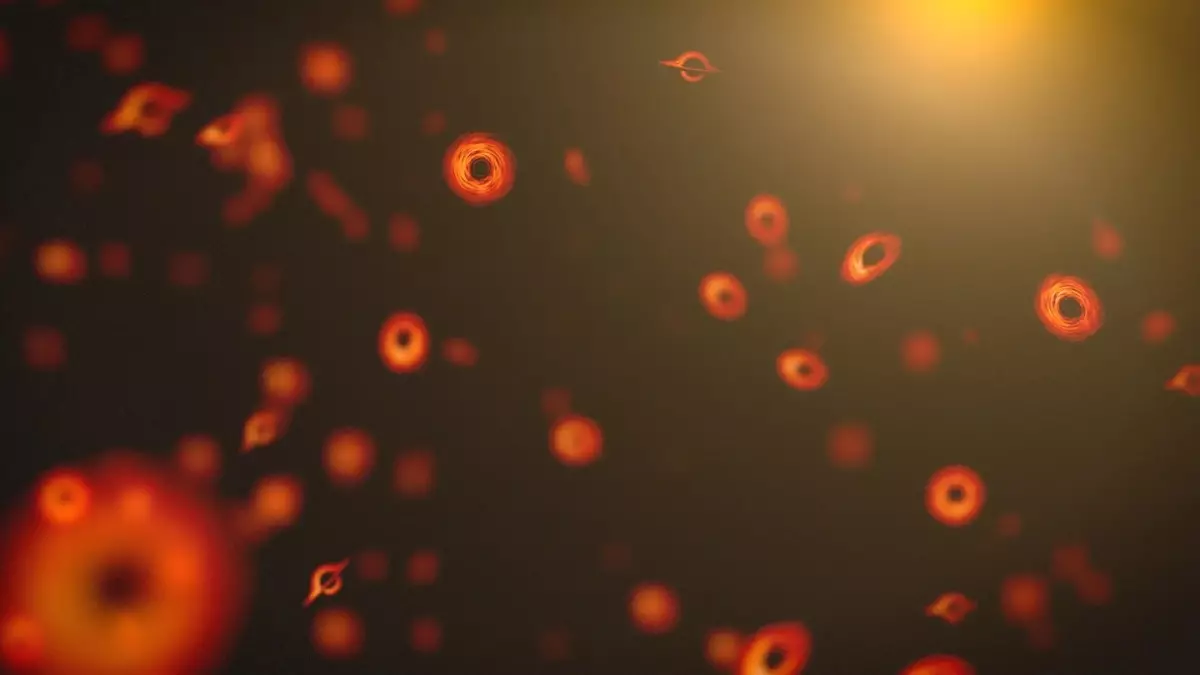Recent investigations published in *Physical Review D* have stirred interest in the astrophysical community by suggesting that primordial black holes might exist within our solar system. Unlike the more commonly understood black holes formed from the catastrophic collapse of massive stars, primordial black holes emerged in the high-energy environment of the early universe. These enigmatic entities are theorized to possess masses akin to asteroids but are remarkably diminutive, with their sizes comparable to that of hydrogen atoms. Their existence could provide critical insights into the nature of dark matter, a mysterious substance that constitutes approximately 85% of the universe’s total matter.
Scientists hypothesize that primordial black holes formed in the dense regions of the early universe, collapsing under intense gravitational forces. Unlike their stellar counterparts, which can grow vast over time, primordial black holes remain relatively small and exhibit rapid velocities—estimated at around 200 kilometers per second. This speed presents intriguing implications for their potential interactions with celestial bodies in our solar system, raising questions about how they might influence gravitational dynamics.
Dr. Sarah Geller, a leading cosmologist from the University of California, Santa Cruz, is currently spearheading efforts to assess how these primordial black holes might affect the orbits of planets. Through detailed modeling of solar system mechanics, her team aims to uncover possible “wobbles” in planetary orbits that could arise from the gravitational influences exerted by these black holes. Such deviations, while subtle, could yield vital clues about their existence and distribution within our solar vicinity.
Exploring another angle, Dr. Sébastien Clesse and Dr. Bruno Bertrand have proposed monitoring satellite movements as a feasible method for detecting primordial black holes. Their hypothesis posits that minute alterations in satellite altitudes could be indicative of these small, hidden black holes. Remarkably, existing space probes could measure these slight gravitational disturbances, offering an innovative approach to unveiling these elusive cosmic objects. This method is particularly compelling, as it capitalizes on current technology, thus avoiding the need for entirely new missions.
Despite the exciting possibilities, questions regarding the detectability of primordial black holes linger. Dr. Andreas Burkert from Ludwig-Maximilians-University Munich has raised critical points about distinguishing the gravitational effects attributed to black holes from other phenomena, such as solar winds or interactions with asteroids. This skepticism underscores the complexity of the research and the need for rigorous validation of the proposed detection methods. While capturing evidence of primordial black holes remains a monumental challenge, researchers argue that these efforts should not be entirely dismissed, as the implications of successfully identifying such objects could reshape our understanding of the universe.
The exploration of primordial black holes within our solar system presents a captivating frontier in astrophysics. As researchers harness novel methodologies to probe their potential existence, the implications extend beyond mere curiosity, potentially unlocking answers to fundamental questions surrounding dark matter and the evolution of our cosmos. While the journey to detect these primordial relics will undoubtedly be riddled with challenges, it heralds a nuanced understanding of the universe’s intricate tapestry.

